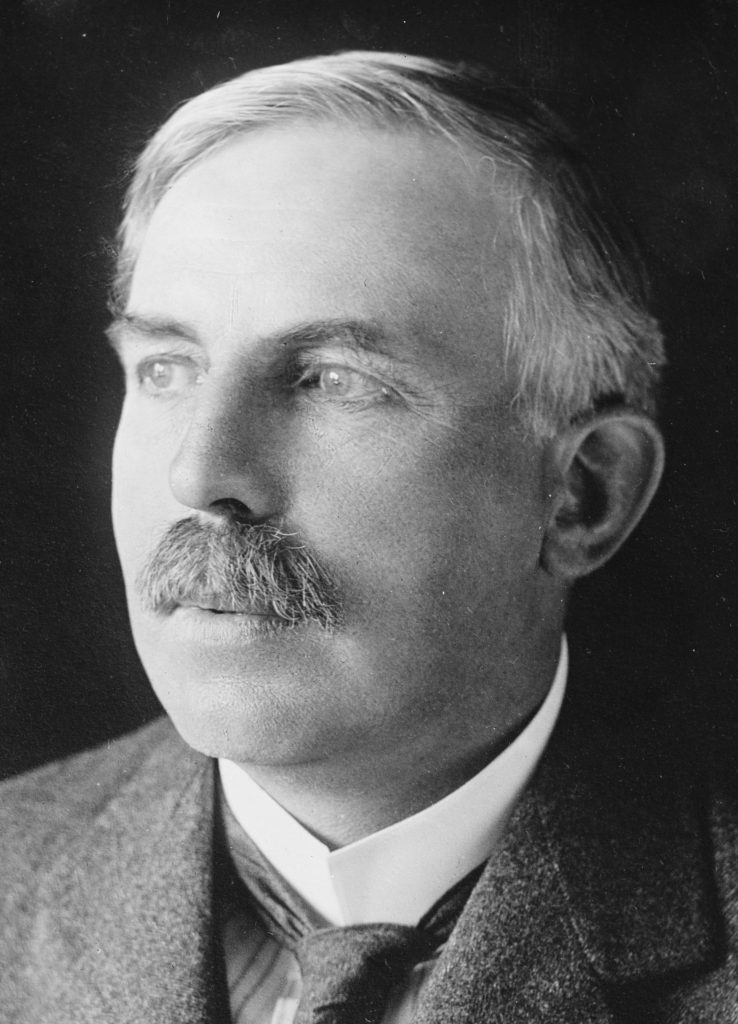Ernest Rutherford (1871 – 1937) was a New Zealand-born British physicist and recipient of the 1908 Nobel Prize in Chemistry. He is often called the “father of nuclear physics.”
After studying with J. J. Thomson at the Cavendish Laboratory at Cambridge University, Rutherford became a professor and chair of the Physics Department at McGill University in Montreal, Canada. In Montreal, he conducted the research that led to his Nobel Prize, including discovering the principle of radioactive half-lives and separating and naming alpha, beta, and gamma radiation.
In 1907, Rutherford returned to Great Britain to teach at the University of Manchester. Two years later, he, Hans Geiger, and Ernest Marsden conducted the Geiger-Marsden experiment, where they observed alpha particles scattering backwards when fired at a gold foil. The surprising results of this experiment (Rutherford said, “It was as if you fired a 15-inch shell at a piece of tissue paper and it came back and hit you”) led Rutherford to formulate his model of the atomic nucleus, a revolutionary development in nuclear physics.
In 1919, he became Cavendish Professor of Physics at Cambridge. Rutherford also coined the term “proton” and theorized about the existence of neutrons, which were discovered by his colleague and former student James Chadwick in 1932.
Rutherford had an enormous influence on the field of nuclear physics and mentored many future Nobel Prize winners and prominent scientists, including Chadwick, Niels Bohr and Otto Hahn. He died on October 19, 1937.
Scientific Contributions
For more information about Rutherford’s scientific contributions, visit the Nobel Prize website.





